By Stephen Wu, economist at CBA:
Key Points:
- Retail trade fell by 0.2% in October, following the solid 0.9% gain in September.
- There was broad-based weakness with the exception of food retailing. Black Friday will support spend in November.
Retail trade fell by 0.2%/mth in October. The result split the difference between our forecast for a larger fall (CBA estimate -0.6%/mth) and the median economists’ forecast for a+0.1%/mth gain.
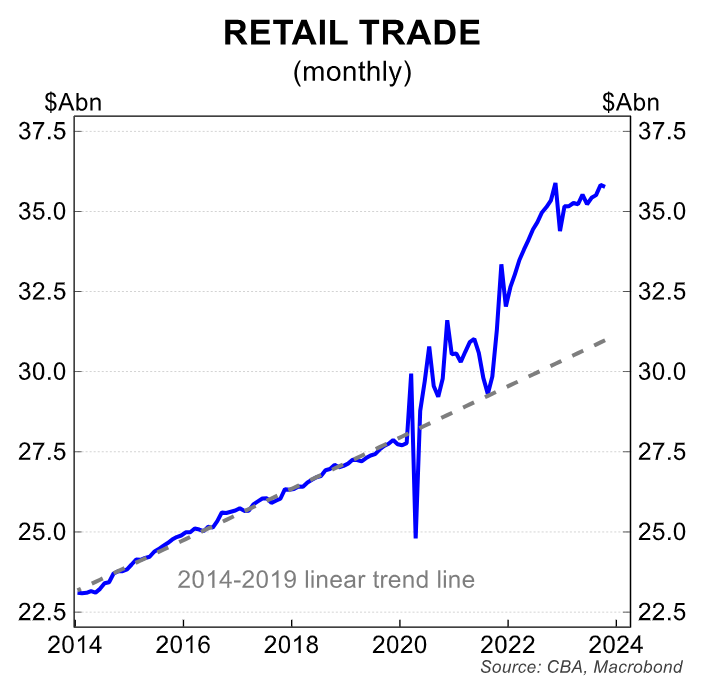
As we had noted last month, the strength of September retail trade was not likely to be repeated, with one-off impacts washing through.
The weakness in October was broadly based, except for food retailing which rose by 0.5%/mth. There were fairly chunky falls in clothing & footwear (-1.0%/mth), household goods and at department stores (both -0.6%/mth) and in other retailing and eating out (both -0.4%/mth).
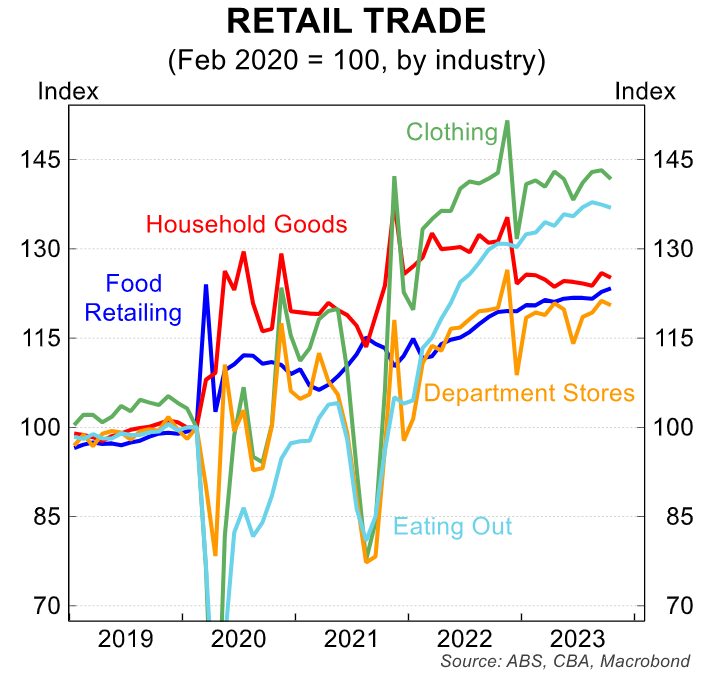
The ABS noted eating out has slowed recently owing to rising prices, with cost-of-living pressures biting. Spending at cafes & restaurants fell for the second consecutive month (September was revised down to -0.3%/mth from a flat outcome previously).
Over the past year, retail trade has increased by just 1.2%. That is the slowest annual pace of growth in retail trade outside of the pandemic since November 2010.
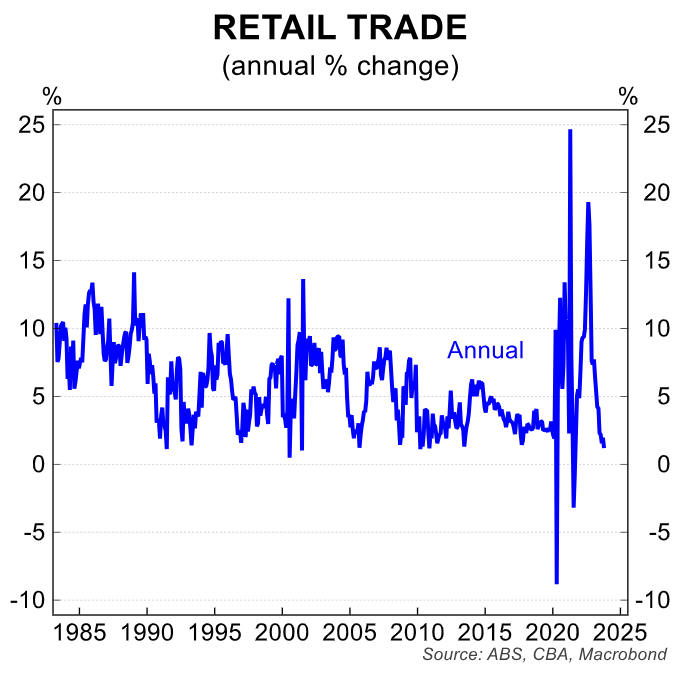
But population growth now is almost double the pace than that period (+2.9%/yr in working age population in October 2023 compared to 1.6%/yr in November 2010). In other words, per capita retail spending is undoubtedly weak.
The only categories of nominal retail trade keeping pace with population growth are food retailing (3.3%/yr) and eating out (4.6%/yr).
Outcomes by state were mixed. The weakness was led by Vic (-0.8%/mth), NSW (-0.5%) and the ACT (-0.5%). There were smaller declines in SA and the NT (-0.1%). WA (+0.8%/mth) and Qld (+0.6%) saw solid increases in October.
The ABS noted that consumers spent less on discretionary items in October in anticipation of the Black Friday sales events in November. This is a pattern observed over recent years given the growing prominence of the sales event.
Our internal CBA weekly spending data, which includes spending up to and including midnight last Friday, show Black Friday spending patterns were broadly similar to previous years (see below chart).
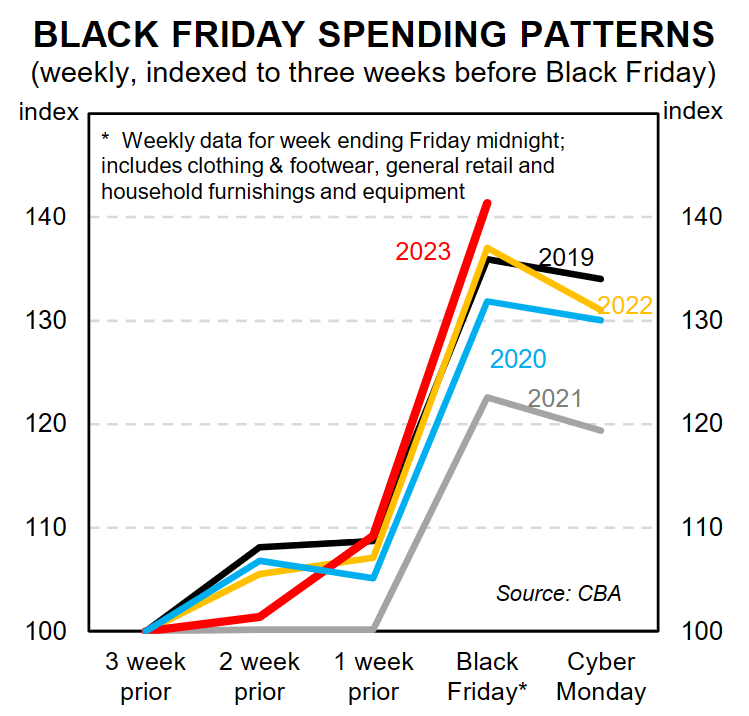
We don’t yet have spending data for the weekend and for Cyber Monday. We will release the November edition of the CommBank Household Spending Insights (HSI) index on 13 December.
The rest of the Q4 23 retail trade data is expected to be volatile, as it has been in previous years.
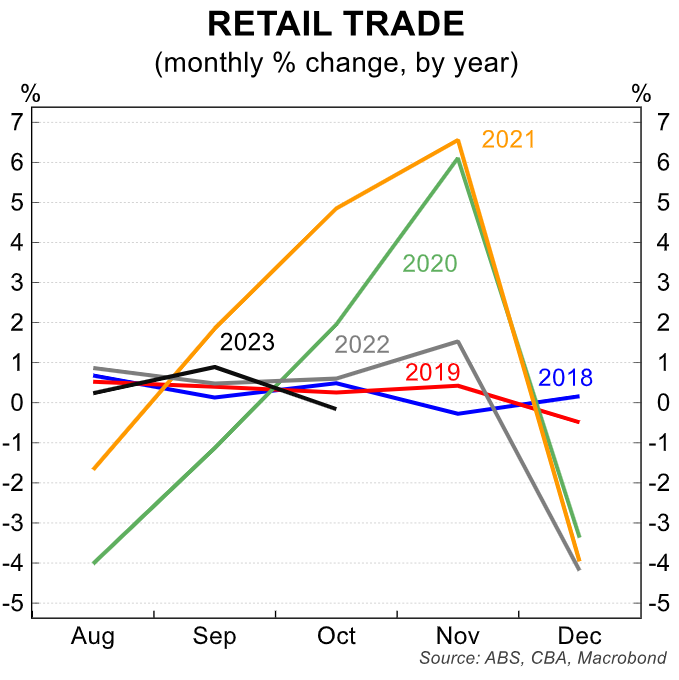
The increasing popularity of the November Black Friday and Cyber Monday sales events has shifted consumers’ spending patterns; as a result, the ABS’ seasonal adjustments are having difficulty in accurately capturing these shifts and there are large swings in the monthly data towards year-end.
In any case, it is too early to tell how much of the spending we are observing in November is a bring forward of spending that previously would have occurred around Christmas. As such, we would caution against reading too much into the next few months of retail trade data.

